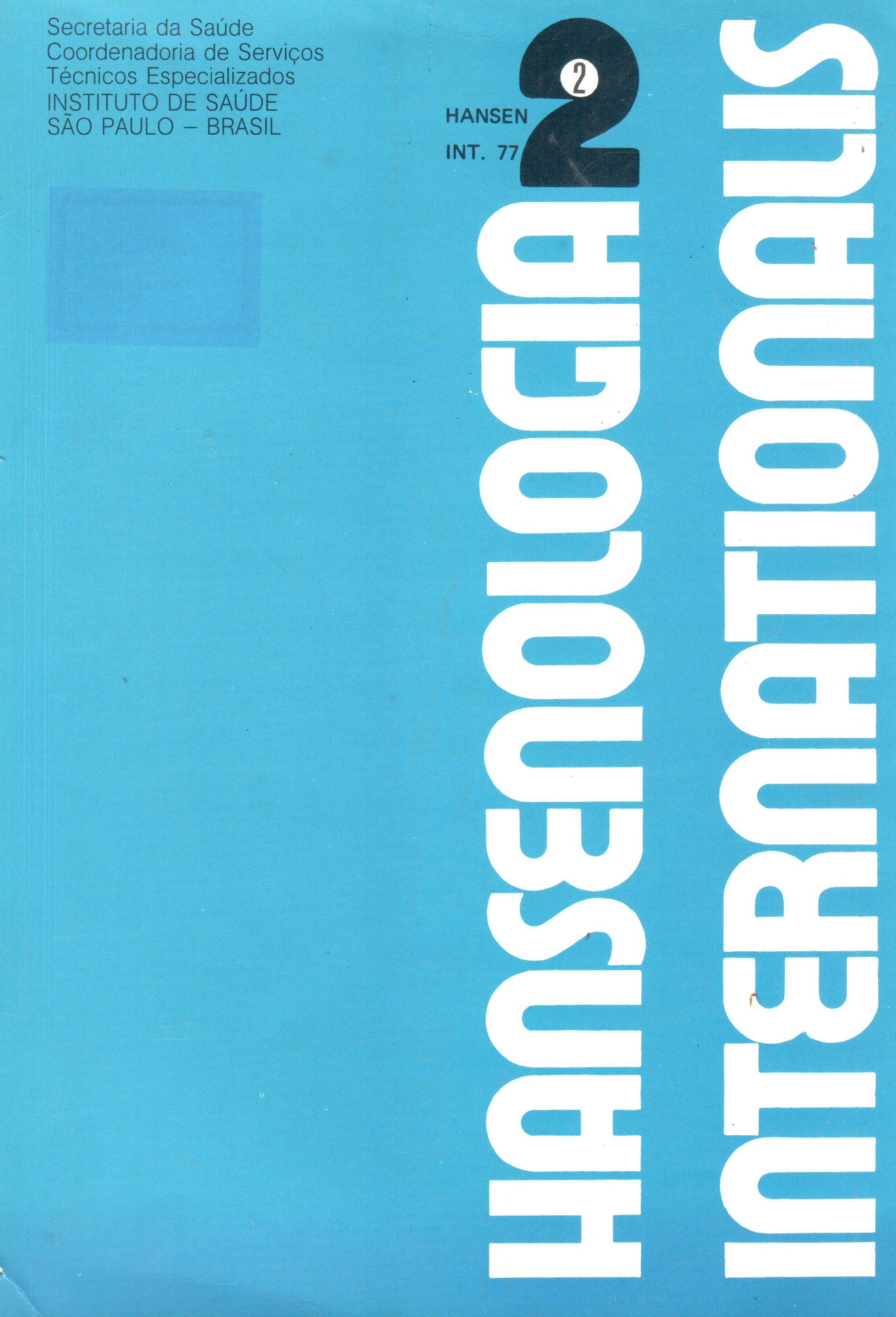Genética e Hanseníase: uma percepção crítica de sua conceituação e evolução
DOI:
https://doi.org/10.47878/hi.1977.v2.36066Keywords:
Genetics, Hanseniasis, Blood groups, Australia antigen, Lisozyme, DermatoglyphsAbstract
In previous scientific papers, application of Genetics methodology to some human diseases has been reviewed. In this paper, the same is tried for hanseniasis. At first, controversies about the infectious or hereditary nature of the disease are discussed, since the polarization when it was defined last century, and through the successive improvements of knowledge about this interesting and fascinating problem, during the last decades. Next, some scientifically consistent discoveries are reviewed, mainly about familial environment, conjugal hanseniasis, twin affection, action of lisozyme and genetic markers, v.g., blood groups,' dermatoglyphs, seric enzymatic polimorphisms and Au antigen. Such information lead to a critical perception indicating that the two basic positions about the nosography of the disease must be redimensioned after a factual multicausality in natural history of the disease, and that the positivist unicausalist optics of determination should be abandoned. Snowing this, and chiefly the mentioned and
discussed evidences of genetic mechanisms in hanseniasis and the greater frequency of effective
transmission of M. leprae than the frequency of newly diagnosed cases, the application of an usual mendelian population model is presented, as a possible theoretical basis of heredity of the disease.
Downloads
References
2. ALI, P. M. Genetics influence in leprosy. Indian J. Public Health, 10:145-165, 1966.
3. BALIRA, L. M., GATTI, J. C.; LÓDOLO, J. C.; NOCHOLSON, R. Lepra y genetics. II. Estudio de Ias impressiones digitopalmares (dermatoglifias) en pacientes de la lepra y conviventes. Leprologia, 12(2) :6471, 1967.
4. BEIGUELMAN, B. Hereditariedade e lepra. Ribeirão Preto, 1969. 710 p. [Tese-Faculdade de Medicina de Ribeirão Preto, USP]
5. BEIGUELMAN, B. Um programa multinacional de investigação leprológica utilizando o estudo de gêmeos. Cien. Cult., 26(5) :469-468, 1974.
6. BEIGUELMAN, B.; EL GUINDY, M. M.; PINTO Jr., W. Sulfonemia: um polimorfismo genético? Ciên. Cult., 26(supl. 7) :249, 1974.
7. BLUMBERG, B. S. Leprosy research through genetics. Int. J. Lepr., 33(3):739-743, 1965.
8. CARRANZA AMAYA, A. Lepra en El Salvador: zonas endemicas y su problema medicosocial. El Salvador, 1947. 99 p. [Tesis-Universidad Autonoma de El Salvador]
9. DIABATE, I. Antigène Australia et lèpre (chez l'Africain du Mali et du Senégal). Dakar, 1973. [These-Faculté de Médecine] apud Bull. Mem. Fac. Med. Pharm. Dakar, 21:19, 1973.
10. FLOCH, H. Transmission congenitale de la lépre. In: - Sur la lépre em Guyane Française. Biol. Med., Paris, 43(6) :632-634, 1954.
11. GHEI, S. B. & VAIDYA, M. C. Role of genetics in leprosy. In: INTERNATIONAL LEPROSY CONGRESS, 10th, Bergen, 1973. Abstracts. p.
12. GONÇALVES, A. Genética em medicina: metodologia eficiente na arte-ciência. Rev. Hosp- Clin. Fac. Med. Sao Paulo, 80:463-465, 1975. (Editorial)
13. GONÇALVES, A. Genética e Saúde Pública. A Ponte, 1(2) :9, 1976.
14. HORTON, R. J. & POVEY, S. Family studies in leprosy. Int. J. Lepr., 34 (4) :408-410, 1966.
15. LUCCA, E. J. Cruzamento de braços e dedos em hansenianos. Rev. Paul. Med., 83(6):278-281, 1974.
16. LYSSENKO, T. D. A herança e sua variabilidade. Rio de Janeiro, Editorial Vitória, 1950. 182p.
17. MACMAHON, B. & PUGH, T. Genética y epidemiologia. In: - Princípios y metodos en epidemiologia. 2.a ed. Mexico, La Prensa Mexicana, 1975. p. 279-330.
18. OPROMOLLA, D. V. A. Comunicação pessoal, 1976.
19. RICOU, E. P. S. M. Do conceito de hereditariedade na lepra. J. Medico, 20(504) :475477, 1952.
20. ROTBERG, A. Some aspects of immunity in leprosy and their importance in epidemiology, pathogenesis and classification of forms of the disease. Rev. Bras. Leprol., 5 (n.° esp.) :45-97, 1937.
21. SAUL, A. & DIAZ, M. La lepra y herencia. Dermatologia, Mexico, 9(2) :157-169, 1965.
22. SILVA AROUCA, A. S. A historia natural das doenças. Saúde em Debate, 1(1) :15-19, 1976.
23. SOUZA CAMPOS, N. & SOUZA LIMA, L. Do conceito da hereditariedade na lepra. In: - Lepra na infância. Rio de Janeiro, Serviço Nacional da Lepra, 1950. p. 17-34.24. SPICKETT, S. C. Genetics and the epidemiology of leprosy. Lepr. Rev., 33 (2) :76-93, 1962.
25. SPICKETT, S. C. Proposals for future studies in genetics. Lepr. Rev., 38(2):109-112, 1967.
26. TERENCIO DE LAS AGUAS, J. Genética en lepra. In: CONGRESO IBERO LATINOAMERICANO `DE DERMATOLOGIA, 6.0, Barcelona, 1967. Actas. Barcelona, Editorial Cientifico Medico, 1970. p. 287-294.
27. VOGAL, F. Genetics studies in leprosy. In: I.C.M.R. SEMINAR ON IMMUNOLOGY OF LEPROSY. New Delhi, 1972 apud Leprosy India, 46(2) :107, 1973.
Downloads
Published
How to Cite
Issue
Section
License

This work is licensed under a Creative Commons Attribution 4.0 International License.
This journal is licensed under a Creative Commons Attribution 4.0 International License.


























